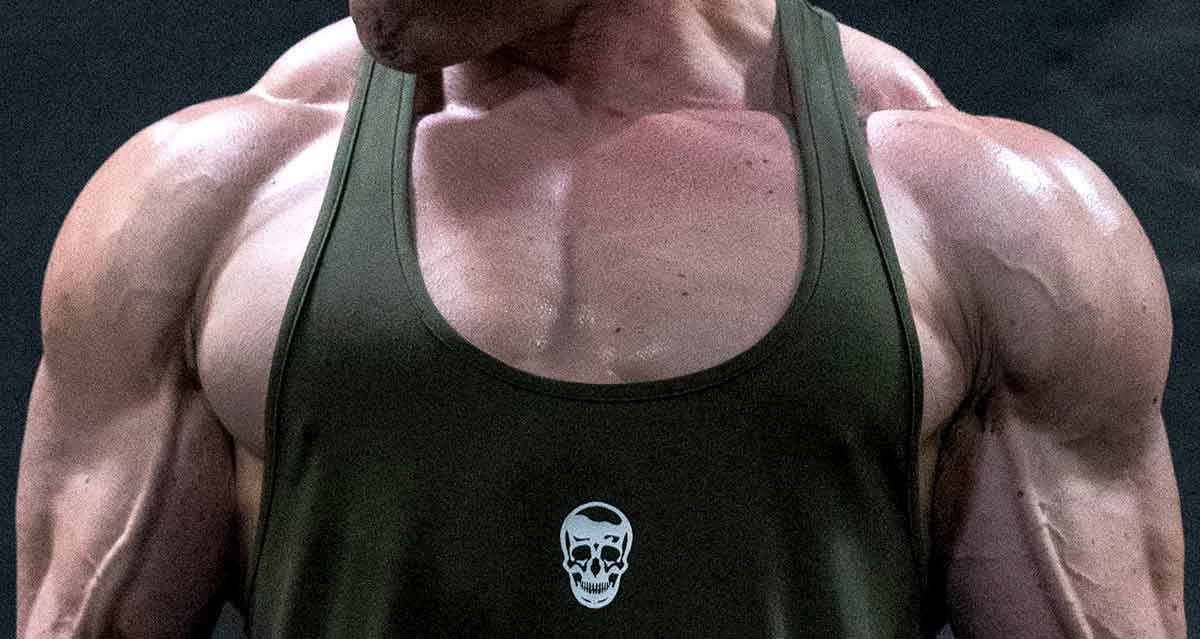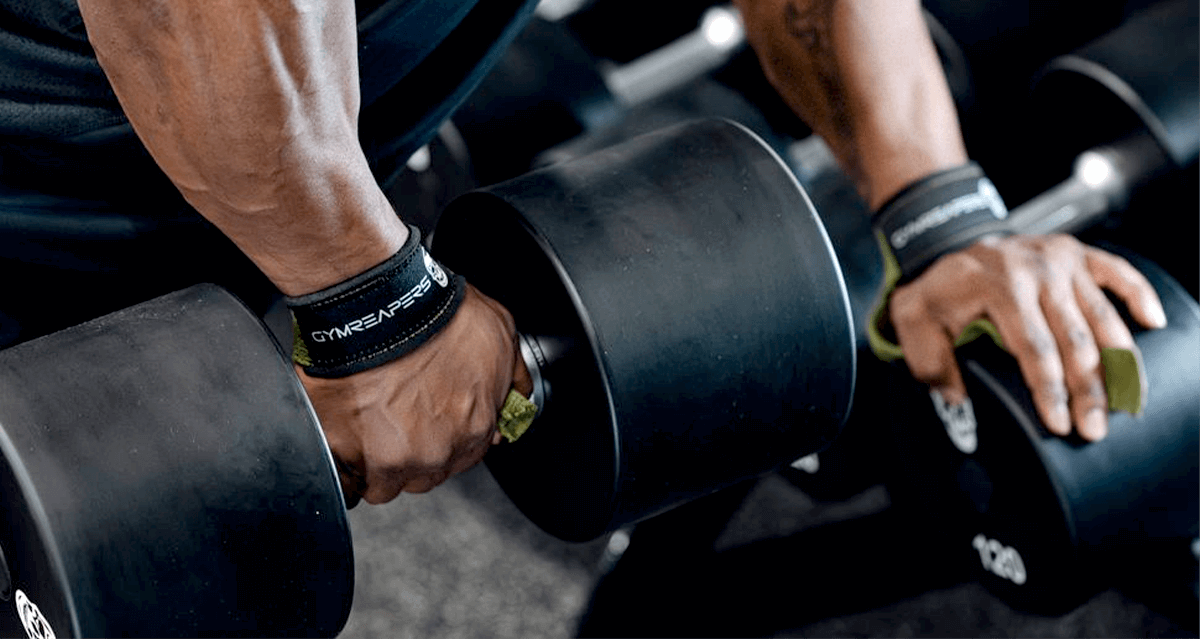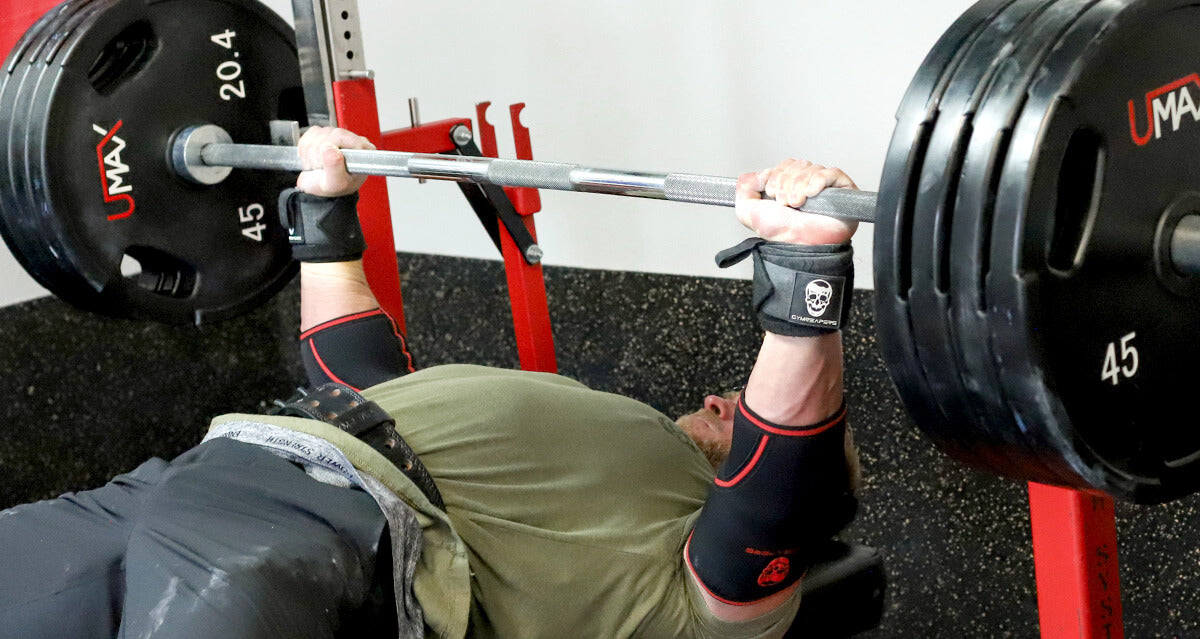Building an impressive upper chest is not complicated, but it does require a well-designed training plan that includes effective exercises done frequently enough at an appropriate intensity. Let’s break down everything you must do to build your upper chest.
Key Takeaways
Anatomy of the Upper Chest
The ‘upper chest,’ also known as the clavicular head of the chest (pectoralis major), has unique functions and contributes to the area’s overall muscular development and appearance.
This portion of the chest originates from the clavicle (collarbone), hence its name, and inserts into the humerus (upper arm bone).
Given the unique muscle fiber orientation (downward from the clavicle) and laterally toward the humerus, the upper chest is more engaged during activities where the arms are raised, and the weight is pressed at an upward angle.
One example is the incline bench press, in which the press is directed away from the body and upward relative to the torso’s position.
Research shows that an incline of around 45° (midway between flat and upright) leads to significantly higher clavicular head activation.
Best Exercises To Target Your Upper Chest
These are the most effective exercises for building your upper chest:
Incline Barbell Bench Press
The incline barbell press is typically done at an angle of around 45°, roughly halfway between flat and upright. A barbell allows for greater loading and mechanical tension, supporting muscle growth.
How To
-
Set the barbell to a height you can reach from a lying position without fully extending your arms.
-
Lie on the bench, reach up, and grab the bar with an even overhand grip.
-
Retract your shoulder blades, plant your feet on the floor, engage your abs, and unrack the bar.
-
Move the weight over your chest, take a breath, and lower it to your upper chest.
- Press the barbell to the top position and breathe out.
Pro Tip:
A common error, particularly when the bar is set too high, is losing your retracted shoulder position as you unrack the weight. To fix the issue, be mindful of the possibility and keep your shoulders back and against the back support.
If you lose your position after unracking the bar, try retracting your shoulders again before doing your first rep to keep the emphasis on the chest.
Why Use Wrist Wraps:
Using wrist wraps during heavy presses like the incline barbell bench press helps stabilize your wrists, reducing strain and preventing injury. They provide the support you need to maintain proper wrist alignment, allowing you to lift heavier with better form. Consider adding wrist wraps, especially when pushing near your max weight.
Incline Dumbbell Bench Press
The incline dumbbell press is similar to the barbell version (above), except that both sides of your body work independently, which can help prevent muscle imbalances.
Additionally, with dumbbells, you can lower the weights further and achieve a better upper chest stretch than when using a barbell.
How To
-
Set the bench at an incline of 30 to 45° and sit down with dumbbells next to your feet.
-
Lean forward, grab the weights, and place them on your thighs.
-
Bring your shoulders back, engage your abs, and take a breath.
-
Kick the dumbbells up one at a time and lie back on the back as you position the weights over your chest.
-
Bring your shoulders back against the bench and set your feet on the floor.
-
Take a breath and slowly lower the weights to your sides as you keep your elbows tucked close to your body.
- Press the weights to the top position, tapping them lightly at the top. Breathe out.
Pro Tip:
There is no perfect angle for everyone. An incline of 30 to 45° is generally best, but even a low incline of 15-20° can work. Experiment to see what feels most natural and allows you to create the most tension in your upper chest.
Why Use Elbow Sleeves:
Using elbow sleeves during heavy lifting helps stabilize the joint, providing support and compression that can prevent injuries and reduce pain during your upper chest exercises. They enhance blood flow to the area, improving recovery times and enabling you to lift more effectively. Consider adding elbow sleeves to your workout gear, especially when tackling heavy presses like the incline dumbbell bench press.
Incline Dumbbell Fly
The chest fly is one of the best movements to isolate the chest. Performing it at an incline (similar to a dumbbell press) shifts the focus toward the clavicular head.
How To
-
Set the bench at an incline of 30 to 45° and sit down with dumbbells next to your feet.
-
Lean forward, grab the weights, and place them on your thighs.
-
Bring your shoulders back, engage your abs, and take a breath.
-
Lie back and lift the dumbbells over your chest, keeping your wrists neutral (palms facing one another).
-
Take a breath and slowly lower the weights to your sides while keeping your elbows slightly bent. You should feel a stretch in your upper chest.
- Pause briefly and return the weights to the top as you breathe out.
Pro Tip:
Dr. Mike Israetel suggests these three simple ways to get the most out of every dumbbell fly rep:
- Pick a light enough weight you can control through a full range of motion.
- Retract your shoulder blades and puff your chest out as much as possible to put it in a pre-stretched position for optimal recruitment during flys.
- Control the eccentric (lowering phase) for maximum chest stimulation.
You can learn more about each tip in this video.
Low Cable Fly
Like an incline dumbbell fly, a low cable fly recruits the upper chest effectively because of the arms' direction. With this variation, you’re standing instead of lying on an incline bench, but your arms move in the same way relative to your torso.
How To
-
Set the pulleys in the lowest position, attach handles, and select the correct weight.
-
Grab the handles one at a time, stand in the middle of the machine, and take a step forward with your arms slightly bent and to your sides.
-
Puff your chest out, engage your abs, take a breath, and move your arms in and up, meeting your hands in front of your chest.
- Pause momentarily and bring your arms back to your sides, feeling your chest muscles stretch. Breathe out.
Pro Tip:
One simple way to contract your upper chest as much as possible is to cross your hands at the top of each rep instead of tapping your knuckles. These few extra inches of range of motion allow you to maximally shorten your upper chest.
Decline Push-Up
Decline push-ups are a practical exercise to hit the fibers of your upper chest, even if you work out at home with little to no equipment.
Positioning your body at a decline angle forces you to press a more significant percentage of your body weight than a regular or kneeling push-up.
How To
-
Elevate your feet on a gym bench, plyo box, chair, or sofa, and extend your body.
-
Plant your hands flat on the floor, slightly outside shoulder-width apart. Your elbows should be to your sides.
-
Bring your shoulders back and engage your abs to keep your lower back from arching.
- Slowly lower yourself until your nose is close to the floor, pause, and press back to the top as you breathe out.
Pro Tip:
One simple way to get more out of the movement is to wrap a loop band (like these from Gymreapers) behind your back and over your hands. The band provides additional resistance, especially near the top of each rep.
Reverse-Grip Bench Press
The reverse-grip bench press is a variation of the classic exercise. It involves using an underhand grip with your palms facing back.
With the reverse grip press, the bar touches lower on your torso, allowing for a more comfortable shoulder position than a traditional bench press. As a result, the bar path is slightly more curved, with the arms up and back relative to the torso, allowing the upper chest to contribute more.
The movement pattern is similar to a low cable fly, with the primary difference being that you’re lying flat instead of standing.
How To
-
Set the barbell to a height you can reach from a lying position without fully extending your arms.
-
Lie on the bench, reach up, and grab the bar with an even underhand grip (palms facing back). If this is your first time doing the exercise, experiment with the grip width to see what feels most comfortable.
-
Bring your shoulders back, dig your feet into the floor, take a breath, unrack the bar, and position it over your chest.
-
Take another breath and slowly lower the bar to your lower chest/upper stomach area.
- Pause briefly and press the bar up and over your upper chest as you breathe out.
Pro Tip:
Though seemingly irrelevant since incline pressing is more popular, the reverse-grip press can be valuable to your chest training, especially if regular pressing movements cause shoulder discomfort.
To optimize your reverse-grip bench press, use wrist wraps and elbow sleeves. Wrist wraps provide essential support for your wrists, enhancing stability during heavy lifts, while elbow sleeves offer warmth and compression to reduce discomfort and improve blood flow. Together, they protect your joints and maximize your performance, ensuring safer and more effective workouts.
How To Create An Upper Chest Routine
 Putting together an upper chest routine is straightforward with the following strategies.
Putting together an upper chest routine is straightforward with the following strategies.
Frequency
Research recommends training a muscle group twice weekly for better growth. Therefore, two weekly upper body sessions with upper chest exercises are ideal for beginner and intermediate lifters. You may need more than two weekly sessions to see upper chest growth if you're a more advanced lifter.
Sets
Research shows that a higher training volume (generally above ten sets per muscle per week) leads to slightly better muscle growth.
So, let’s say you’re doing 16 total sets for your chest per week (a good target for most intermediate-level trainees).
If you’re doing eight sets on Monday and eight sets on Thursday, you can include one upper chest exercise in both sessions like this:
- Monday: incline barbell bench press (3-4 sets)
- Thursday: low cable fly (3-4 sets)
Dedicating roughly half your chest volume to the upper chest is a good idea, as there is enough stimulus to that area, and you still have sets left over to target the mid and lower chest.
Reps/Loading
Varying the weights and rep ranges is highly beneficial, as this allows you to target and stress the muscle fibers in different ways. This promotes mechanical tension and metabolic stress, which are important factors for muscle growth.
For example, you can do 6-12 reps on one of your upper chest exercises and 12-20 on the other.
Progression
Aim to gradually do more reps across all sets and only increase the weight when you’re 100% confident in your technique.
Here’s a simple progression option for the incline barbell bench press where the goal is to get eight reps across all sets:
|
Week 1 |
Week 2 |
Week 3 |
Week 4 |
Week 5 |
|
Set 1 - 80 kg x 8 Set 2 - 80 kg x 7 Set 3 - 80 kg x 7 Set 4 - 80 kg x 6 |
Set 1 - 80 kg x 8 Set 2 - 80 kg x 8 Set 3 - 80 kg x 8 Set 4 - 80 kg x 8 |
Set 1 - 82.5 kg x 8 Set 2 - 82.5 kg x 7 Set 3 - 82.5 kg x 6 Set 4 - 82.5 kg x 6 |
Set 1 - 82.5 kg x 8 Set 2 - 82.5 kg x 8 Set 3 - 82.5 kg x 8 Set 4 - 82.5 kg x 7 |
Set 1 - 82.5 kg x 9 Set 2 - 82.5 kg x 8 Set 3 - 82.5 kg x 8 Set 4 - 82.5 kg x 8 |
Sample Upper Chest Workout

Here are two sample workouts you can use to build your upper chest.
Beginner Upper Chest Workout
|
Exercise |
Sets |
Reps |
|
Incline Barbell Bench Press |
3 |
8-10 |
|
Machine Chest Press |
3 |
10-12 |
|
Low Cable Fly |
3 |
12-15 |
This is an example of a beginner chest workout. Two of the three movements emphasize the upper chest.
Advanced Upper Chest Workout
|
Exercise |
Sets |
Reps |
|
Incline Barbell Bench Press |
4 |
6-8 |
|
Decline Push Up |
4 |
Close to failure |
|
Chest Dip |
4 |
Close to Failure |
|
Low Cable Fly |
4 |
12-15 |
As you can see, this workout is similar to the beginner workout, but it has one more exercise and more sets overall. Three of the four movements target the upper chest.
How to Integrate an Upper Chest Workout Into Your Overall Program
You don’t need to dedicate an entire workout to the upper chest. Adding upper chest exercises into your upper body days will provide the right stimulus to grow the clavicular head and help you achieve more balanced pectoral growth.
Here are two simple examples of how you may integrate upper chest work into your program:
3-Day Push/Pull/Legs
|
Workout 1 - Push |
||
|
Exercise |
Sets |
Reps |
|
Incline Barbell Bench Press |
4 |
8-10 |
|
Seated Dumbbell Shoulder Press |
4 |
10-12 |
|
Machine Chest Press |
4 |
10-12 |
|
Low Cable Fly |
4 |
12-15 |
|
Dumbbell Lateral Raise |
3 |
12-15 |
In this example, you train the chest once weekly, meaning you must do all upper chest work that day. Here, we have two upper chest exercises: one compound and one isolation.
Although training the chest two days a week is best, many people can only commit to three weekly training sessions. Therefore, a push/pull/legs split may be more realistic.
4-Day Upper/Lower Split
|
Upper A (e.g., Monday) |
||
|
Exercise |
Sets |
Reps |
|
Incline Barbell Bench Press |
4 |
8-10 |
|
Bent Over Barbell Row |
4 |
8-10 |
|
Seated Dumbbell Shoulder Press |
3 |
10-12 |
|
Cable Lat Pulldown |
3 |
10-12 |
|
Machine Chest Press |
4 |
10-12 |
|
Dumbbell Lateral Raise |
3 |
12-15 |
|
Upper B (e.g., Thursday) |
||
|
Exercise |
Sets |
Reps |
|
Pull Ups |
4 |
Close to failure |
|
Flat Dumbbell Bench Press |
4 |
8-10 |
|
Seated Cable Row |
3 |
10-12 |
|
Low Cable Fly |
4 |
10-12 |
|
Cable Rope Tricep Extension |
3 |
12-15 |
Here, you train the chest twice weekly, so you don’t have to do all your upper chest work in the same workout. In this example, both upper body workouts include one movement to target the clavicular head.
To keep your wrists healthy and avoid joint discomfort, consider using Gymreapers wrist wraps for your pressing exercises.
Frequently Asked Questions
How Often Should I Train My Upper Chest?
You can train your upper chest once per week (as would be the case on a 3-day push/pull/legs split). However, training the area twice per week (like on a 4-day upper/lower split) will lead to more growth in the long run.
Can I Develop My Upper Chest Without Weights?
It would be trickier to develop your upper chest without weights, but you can get some development with decline push-ups, which don’t require any equipment.
How Long Before I See Results?
Muscle growth occurs at different rates for everyone, but you should start seeing good upper chest growth within twelve weeks of training. That said, you need to maintain proper form, apply overload, train hard enough, and eat accordingly (enough protein and calories).















Leave a comment
All comments are moderated before being published.
This site is protected by hCaptcha and the hCaptcha Privacy Policy and Terms of Service apply.